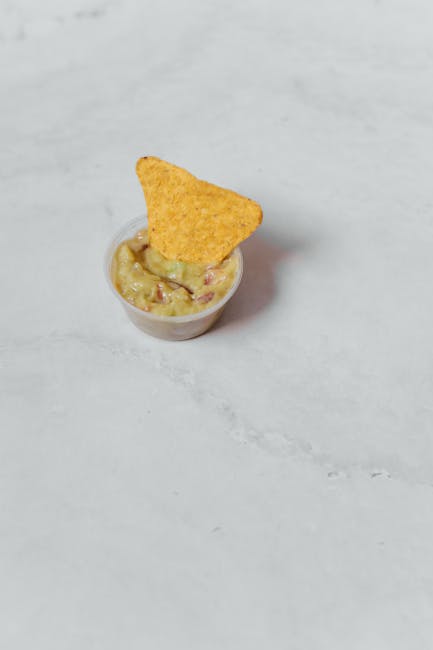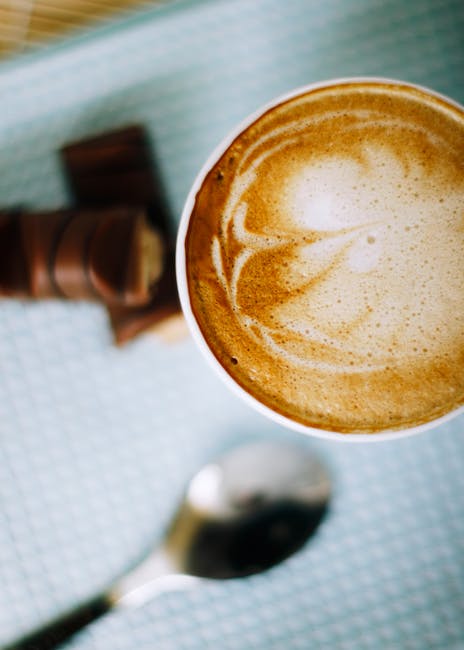The quest for the perfect scoop of ice cream, that creamy, dreamy confection, is a journey as old as the frozen treat itself. While pinpointing the exact origin is tricky, evidence suggests that early forms of ice cream, often incorporating snow or ice with flavorings, existed in various cultures centuries ago. Ancient China, as far back as the 2nd century BCE, saw the creation of a frozen dessert called bing, a mixture of ice and flavored snow. Similar preparations appeared in the Middle East and Persia, often featuring fruit syrups and honey. The journey to modern ice cream took centuries, evolving through the use of ingredients like milk and cream, which significantly impacted its texture and flavor profile.
The arrival of ice cream in Europe marked a significant turning point. Italian chefs during the Renaissance refined the techniques, resulting in richer, more sophisticated frozen desserts. Catherine de’ Medici, upon her marriage to Henry II of France, is credited with introducing a form of ice cream to the French court in the 16th century, setting off a wave of popularity amongst the elite. It wasn’t until the 19th century, however, with the advent of improved refrigeration technology, that ice cream became more accessible to the general public. The invention of the ice cream freezer in the United States, further spurred mass production and widespread consumption. Today, the global ice cream market is a multi-billion dollar industry, showcasing its enduring appeal and cultural significance.
Ice cream’s cultural impact extends far beyond mere consumption. It’s a staple at celebrations, a comforting treat on a hot day, and a symbol of childhood joy. Statistics reveal the staggering popularity: the average American consumes nearly 23 pints of ice cream per year, and the United States is considered one of the world’s biggest ice cream consumers. From artisanal shops offering unique flavors to large-scale production of classic varieties, ice cream continues to adapt and evolve, reflecting regional preferences and culinary innovations. This enduring popularity emphasizes that more than just a dessert; ice cream is a cultural phenomenon, a testament to our collective love for creamy, cold perfection. This guide will teach you how to create that perfect, homemade, creamy delight.
Ingredients and Measurements
Creating the creamiest homemade ice cream hinges on using high-quality ingredients and precise measurements. Don’t be tempted to substitute or guess – accuracy is key to achieving that perfect texture.
For this recipe, we’ll be making a classic vanilla ice cream, easily adaptable to your favorite flavors. You’ll need:
- 2 cups (475ml) heavy cream: This is the foundation of your creamy texture. Use the highest fat content you can find (at least 36%). Lower-fat options will result in a thinner, icier final product. Avoid ultra-pasteurized cream as it lacks the necessary fat globules for optimal creaminess.
- 1 cup (200g) granulated sugar: This provides sweetness and helps prevent ice crystals. Don’t reduce the sugar significantly, as it plays a crucial role in texture and freezing point depression. You can adjust to your taste preference, but keep in mind that less sugar will result in a slightly icier texture.
- 1 cup (240ml) whole milk: Whole milk adds richness and contributes to the overall creamy mouthfeel. Using skim milk will result in a noticeably less creamy outcome. Avoid using ultra-pasteurized milk for the same reasons as the cream.
- 1 teaspoon pure vanilla extract: This classic flavoring enhances the overall taste. Use a high-quality vanilla extract for the best flavor. Artificial vanilla extract will not deliver the same depth of flavor.
- 1/4 teaspoon salt: A pinch of salt balances the sweetness and enhances the other flavors. Don’t skip this ingredient; it’s crucial for flavor complexity. You can adjust slightly to your taste preferences.
- Optional: For added richness and complexity, consider adding 1-2 large egg yolks. This will create a custard base, resulting in a richer, more luxurious ice cream. If using egg yolks, temper them gently to prevent scrambling before adding them to the cream mixture.
Precise measurements are crucial. Use a kitchen scale for the most accurate results, especially for the sugar. Measuring cups can be less precise, leading to inconsistencies in your ice cream’s texture and sweetness. Remember to bring your ingredients to room temperature before combining them for optimal emulsification.
With these carefully measured ingredients and attention to detail, you’ll be well on your way to crafting the creamiest, most delicious homemade ice cream you’ve ever tasted!
Equipment Preparation
Making the creamiest ice cream at home requires meticulous preparation of your equipment. The right tools will significantly impact the final texture and consistency of your frozen delight. Let’s start by gathering everything you’ll need.
First, you’ll need an ice cream maker. While various types exist (hand-cranked, electric compressor, and those requiring an ice bath), this guide assumes you’re using an electric ice cream maker that requires a freezer bowl. Ensure your freezer bowl is thoroughly frozen for at least 24 hours before you begin. This is crucial for optimal churning and freezing. A partially frozen bowl will result in a less creamy, icy texture.
Next, gather your mixing bowls. You’ll need at least two – one large bowl (approximately 5-quart capacity) for mixing the ice cream base and a smaller bowl (approximately 2-quart capacity) for any additional ingredients, like chocolate chips or nuts, that you’ll fold in later. Choose stainless steel or glass bowls as they are non-reactive and won’t affect the flavor of your ice cream.
Measuring tools are essential for accuracy. You’ll need measuring cups (dry and liquid) and measuring spoons. Precise measurements are vital for achieving the perfect balance of sweetness, creaminess, and richness. Invest in good quality tools for accurate readings.
For smoother results, use a high-quality whisk to thoroughly combine the ingredients in your ice cream base. A sturdy whisk helps prevent lumps and ensures a consistent texture. A rubber spatula will also be helpful for scraping down the sides of the bowl and ensuring everything is well incorporated.
Finally, consider having a kitchen scale. While not strictly necessary, a scale allows for even more precise measurements, especially when working with ingredients like sugar and cream, where slight variations can affect the final product. If you don’t own a scale, ensure you use properly leveled measuring cups and spoons.
Once you have all your equipment assembled and ready, you can confidently proceed to the next step: creating your delicious ice cream base!
Making the Custard Base
The custard base is the foundation of incredibly creamy homemade ice cream. A well-made custard contributes significantly to the final texture and richness, preventing icy crystals and delivering a smooth, luxurious mouthfeel. This recipe uses a classic egg yolk custard, but you can adapt it to use other stabilizers like cornstarch or arrowroot if you prefer.
We’ll start with 2 cups (475ml) of whole milk. Whole milk is crucial here; its higher fat content contributes immensely to creaminess. Using lower-fat milk will result in a noticeably icier texture. Pour the milk into a medium-sized saucepan. Add 1 cup (200ml) heavy cream for extra richness. Heavy cream is higher in fat than even whole milk, thus ensuring a velvety smooth ice cream.
Next, whisk together 6 large egg yolks and ¾ cup (150g) granulated sugar in a separate bowl until the mixture is pale and slightly thickened. Don’t skip this whisking step! It’s essential for incorporating air and preventing lumps in your custard. This process also helps to temper the eggs, which is crucial for preventing them from scrambling when added to the hot milk mixture.
Slowly pour a small amount (about ½ cup) of the hot milk mixture into the egg yolk and sugar mixture, whisking constantly. This tempers the eggs, gradually raising their temperature and preventing them from curdling. Once the eggs are slightly warmed, slowly pour the remaining milk mixture into the bowl, whisking continuously to ensure everything is well combined.
Pour the combined mixture back into the saucepan. Cook over medium-low heat, stirring constantly with a spatula, until the custard thickens enough to coat the back of the spatula. This will take approximately 8-10 minutes. Do not let the custard boil; a gentle simmer is all that’s needed. Overheating will result in a grainy texture and potentially scrambled eggs. Once thickened, immediately remove the custard from the heat.
Strain the custard through a fine-mesh sieve into a bowl to remove any lumps or bits of cooked egg. This step is essential for creating a perfectly smooth ice cream. Allow the custard to cool completely before churning. You can speed up the cooling process by placing the bowl in an ice bath. Once cooled, cover and refrigerate for at least 4 hours, or preferably overnight. This allows the flavors to meld and the custard to fully chill before churning.
Churning the Ice Cream
Churning your ice cream mixture is the crucial final step in creating that perfectly smooth, creamy texture. This process incorporates air into the mixture, preventing ice crystals from forming and resulting in a delightful, scoopable treat. The exact churning time depends on your ice cream maker, so always refer to your manufacturer’s instructions. However, some general guidelines will help you achieve ice cream perfection.
Before you begin, ensure your ice cream maker’s bowl is properly frozen. This is paramount; a partially frozen bowl will not churn the mixture effectively, resulting in a grainy texture. Most manufacturers recommend freezing the bowl for at least 24 hours. For best results, freeze it for a full 48 hours, especially in warmer climates.
Once your bowl is sufficiently frozen, carefully pour your chilled ice cream base into the machine. Avoid pouring it too quickly, as this can cause splashing and uneven churning. A gentle, slow pour is best. The quantity of base will depend on your ice cream maker’s capacity; never exceed the maximum fill line indicated in your instruction manual. For a standard 1.5-quart ice cream maker, a recipe yielding approximately 1.25 quarts of base is ideal.
Turn on your ice cream maker and let it churn according to the manufacturer’s instructions. This typically takes between 20-40 minutes. During this time, resist the urge to constantly open the lid. Frequent opening will allow warm air to enter, raising the temperature and potentially affecting the texture. However, you can check on the progress periodically, especially towards the end, to ensure the desired consistency is reached.
The ice cream is ready when it has thickened significantly and resembles soft-serve ice cream. It should be thick enough to hold its shape but still slightly soft. Do not over-churn. Over-churning can result in a dense, icy texture. If you’re unsure, it’s always better to slightly under-churn.
Once the churning is complete, immediately transfer the ice cream to an airtight container. Rapid freezing is key to maintaining a smooth texture. Spread the ice cream evenly in the container to facilitate quicker freezing. Ideally, place the container in the freezer as quickly as possible. Allow it to harden for at least 4-6 hours, or preferably overnight, before scooping and serving.
Remember that the quality of your ingredients and the precision of your process will directly impact the final product. By following these steps and paying attention to detail, you’ll be well on your way to creating the creamiest, most delicious homemade ice cream.
Hardening the Ice Cream
Hardening your ice cream properly is crucial for achieving that perfect, creamy texture. It’s not just about freezing it; it’s about controlling the ice crystal formation to minimize them and maximize smoothness.
After churning your ice cream base in your ice cream maker, you’ll have a soft-serve consistency. This is not ready for long-term storage. It needs further freezing to develop its final texture. Transfer the churned ice cream immediately into an airtight container. A sturdy, freezer-safe container is recommended, ideally one that’s not too large to minimize the air space above the ice cream. Leaving too much air space can lead to ice crystals forming on the surface.
For optimal hardening, aim for a container that’s about 2 inches wider and 1 inch taller than the amount of ice cream you’ve churned. This allows for expansion during freezing, preventing spills and cracks in the container. Avoid filling the container completely to the brim.
Press a piece of plastic wrap directly onto the surface of the ice cream before sealing the lid. This helps prevent the formation of large ice crystals on the top layer, which is often the driest part of homemade ice cream. This simple step significantly improves texture.
Now, place the container in your freezer. The hardening time depends on your freezer’s temperature and the quantity of ice cream. For a quart (about 1 liter) of ice cream, expect a hardening time of at least 4-6 hours, but ideally, overnight is best for optimal results. This allows the ice crystals to grow slowly and evenly, resulting in a smoother, creamier texture.
Once hardened, allow the ice cream to sit at room temperature for about 5-10 minutes before scooping. This slightly softens it, making it easier to scoop without excessive force, which can damage the texture and create uneven scoops. Avoid letting it sit out for too long, as it will start to melt.
Professional Tip: For extra creamy ice cream, consider using a higher-quality freezer with a consistent temperature. Fluctuations in temperature can lead to larger ice crystals. Also, avoid opening and closing the freezer frequently during the hardening process, as this can also affect the temperature stability and ice crystal formation.
Flavor Variations and Additions
The beauty of homemade ice cream lies in its endless adaptability. Once you’ve mastered the basic custard base, the flavor possibilities are truly limitless. This section explores various flavor variations and additions, guiding you towards creating unique and delicious ice cream creations.
Fruit Purees: Incorporating fruit purees is a fantastic way to add natural sweetness and vibrant color. Use approximately 1-1.5 cups of strained puree per quart of ice cream base. Important Note: Strain the puree to remove seeds and fibers for a smoother texture. Popular choices include strawberry, raspberry, blueberry, mango, and peach. Consider adding a touch of lemon juice to prevent browning in lighter-colored purees.
Chocolate: For chocolate ice cream, use high-quality cocoa powder or melted dark chocolate. For a rich, deep chocolate flavor, add 1/2 to 1 cup of unsweetened cocoa powder to your base. For a more intense chocolate experience, use 4-6 ounces of high-quality dark chocolate, melted and incorporated into the cooled custard base. Remember to temper your chocolate properly to avoid seizing.
Nuts and Seeds: Toasted nuts and seeds add wonderful texture and a delightful crunch. Add 1/2 to 1 cup of your favorite toasted nuts (such as pecans, walnuts, or almonds) or seeds (like sunflower or pumpkin) during the last few minutes of churning. Avoid adding them too early as they may become too soft.
Spices: Experiment with spices to create unique and complex flavor profiles. A pinch of cardamom, cinnamon, or nutmeg can elevate your ice cream to another level. Start with small amounts (1/4 to 1/2 teaspoon) and adjust to your taste. Remember that spices can be quite potent, so start conservatively.
Extracts and Flavorings: Vanilla extract is a classic, but you can explore other extracts like almond, peppermint, or lemon. Use 1-2 teaspoons per quart of ice cream base. Be mindful that strong extracts can easily overpower the other flavors.
Swirls and Mix-ins: Adding swirls of caramel, chocolate sauce, or fruit preserves can create beautiful visual appeal and delightful flavor contrasts. Add these during the last few minutes of churning. For a truly decadent treat, consider incorporating chunks of cookies, brownies, or candy. Ensure your additions are well-chilled to prevent melting too quickly during churning.
Alcoholic Beverages: A splash of liqueur or alcohol (like rum, bourbon, or Grand Marnier) can add a sophisticated twist. Remember that alcohol lowers the ice cream’s freezing point, so it might result in a slightly softer texture. Add 1-2 tablespoons per quart of base, and remember to adjust based on the alcohol’s strength.
Recommendations
For the creamiest results, always use high-quality ingredients. Fresh, heavy cream is key to achieving that luxurious texture. Don’t skimp on the good stuff! Experiment with different flavor combinations – the possibilities are endless. Consider adding extracts like vanilla, almond, or peppermint, or incorporating fresh fruits, chocolate chips, nuts, or candies for added texture and flavor.
Serving suggestions are plentiful. Enjoy your homemade ice cream straight from the freezer, or let it soften slightly for a more scoopable consistency. Serve it in bowls, cones, or even use it as a topping for pies, cakes, or cobblers. A delightful addition is a drizzle of your favorite sauce – chocolate, caramel, or berry coulis would all work wonderfully.
For optimal storage, transfer your ice cream to an airtight container and freeze it immediately. Properly stored, your ice cream should last for 2-3 months. However, for the best flavor and texture, it’s recommended to consume it within a month. Avoid repeated freeze-thaw cycles, as this can affect the ice cream’s quality.
Complementary dishes that pair perfectly with homemade ice cream include warm apple pie, brownies, cookies, and waffles. The contrast in temperatures and textures creates a truly satisfying dessert experience. You could also serve it alongside fruit tarts or other pastries for an elegant dessert presentation.
Nutritional information (per serving – values will vary depending on recipe): This is an approximation and will vary based on your specific recipe and ingredients. For accurate information, use a nutrition calculator with your exact ingredients and quantities. Expect approximately 200-300 calories per serving, with varying amounts of fat, sugar, and protein. Check your recipe for specific details. Note: This is a high-fat dessert, so moderation is advised.
Remember to always follow your chosen recipe carefully for the best results. Don’t be afraid to experiment and tailor the recipe to your personal preferences. Happy ice cream making!





